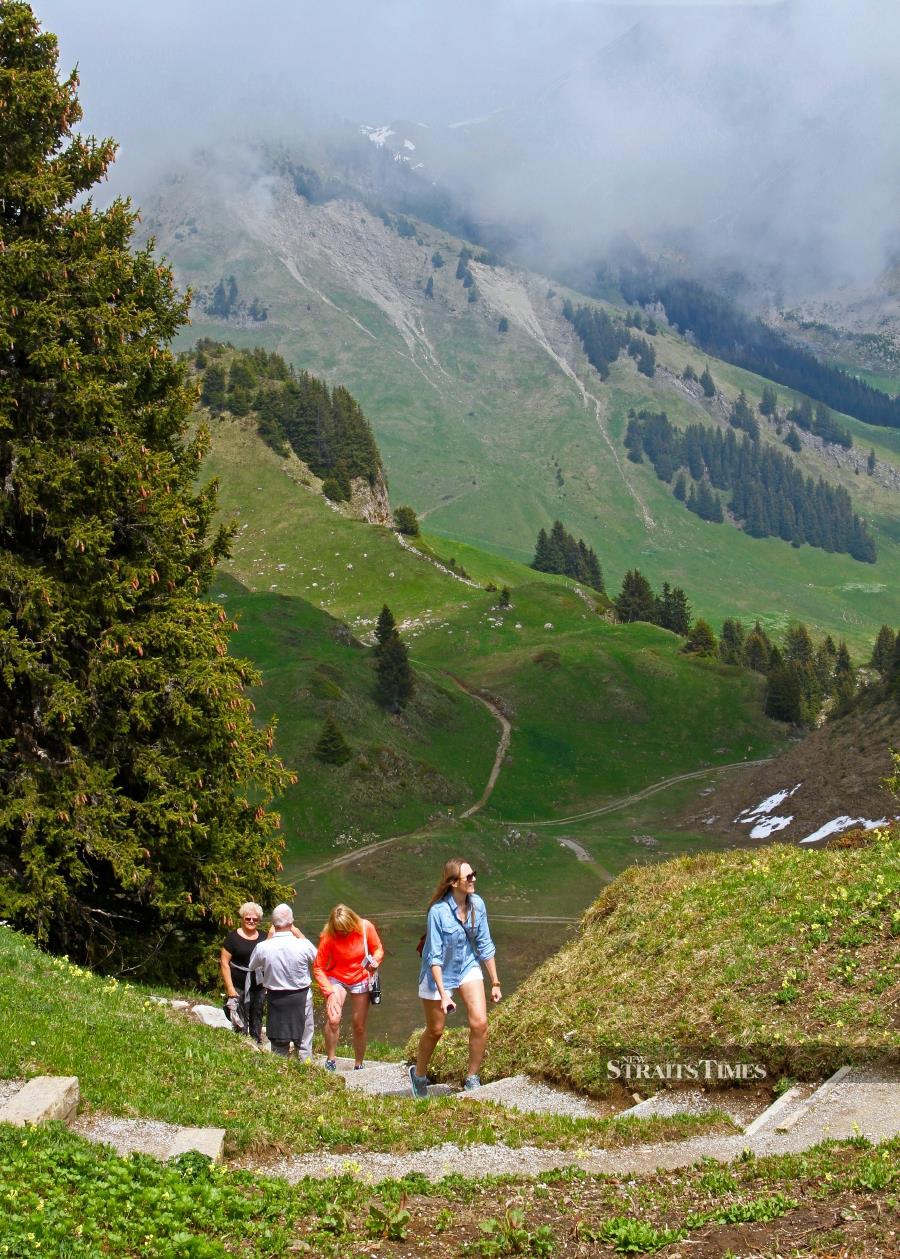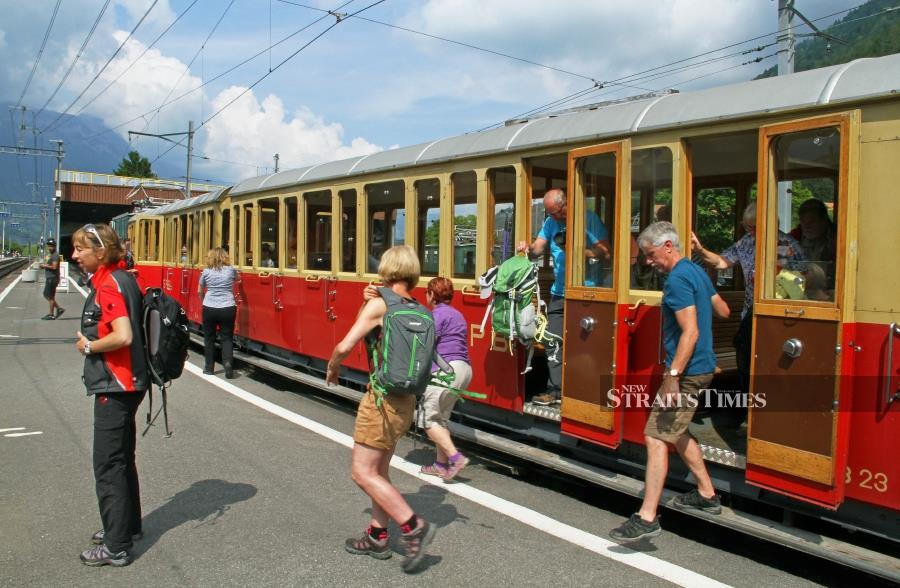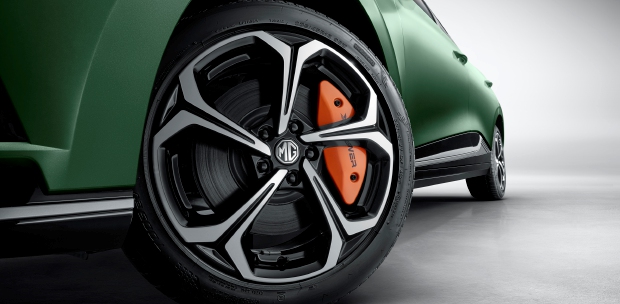
I AM in seventh heaven – dramatic alpine scenery, crisp cool air, late summer sunshine and access via some of Europe's most iconic railways. It is a fine welcome to the 'top of Europe' and the famous Jungfrau.
As railways go, the tracks up the Swiss Alps to just below the summit of the Jungfrau are some of the highest in the world and the rail journey is a must for anyone visiting Switzerland.
Don't be put off by the hard-to-pronounce Germanic names as these are three iconic walks in one of the most famous walking regions in the world.
My guide Sandrine Vogt suggests we walk up hill but I am keen for less exertion so overrule her suggestion and catch the train to higher altitudes and then walk downhill to the lower station to rejoin the train.
So there are options on the first two walks – the listed way is downhill while the destinations in reverse is for those more masochistic souls who enjoy walking uphill.
WALK #1 – EIGERGLETSCHER TO KLIENE SCHEIDEGG
This is an exciting walk to include after travelling all the way to the Jungfrau and the 'top of Europe'. On the way back down the mountain, I hop on the train at Eigergletscher (Eiger Glacier) and walk down to Kleine Scheidegg.
Being downhill, it is a leisurely walk of one hour that closely follows the train line. The trail drops from 2,320m above sea level to 2,000m and while I have to stop and turn around, the view of the mighty Eiger towering at 4,000m, is a constant but pleasant distraction.
This is the highest north-facing mountain in the Alps and one of the world's most challenging rock ascents that is best left to the professionals.
My effort is way more modest but an accomplishment in itself and a walk that almost anyone could conquer.

WALK #2 – LAUTERBRUNNED TO GRUTSCHALP AND MURREN
Lauterbrunnen is one of the connecting stations for trains travelling up the Jungfrau as well as the terminus for the cable car to Grütschalp. From here there is a train service uphill to Mürren and it is from here that I retrace my journey on foot, downhill back down to Grütschalp.
I choose this direction as it is downhill but the adventurous may want to walk uphill and return downhill by train. Mürren is a small, elongated, car-free village that extends along the ridge below the Schilthorn with spectacular views across to the Alps as well as down to Lauterbrunnen in the valley below.
Tourism is important in the village and there are five times the numbers of tourist beds in Mürren than residents. However, the town isn't crowded in summer and after a turn around the town I headed 4.3km back down the hill on a well-defined trail that basically followed the train line.
This is a beautiful walk through pine forests and past grassy pastures and the train passes regularly to enable excellent photography in scenic backdrops that keep changing. While I walk all the way, I could have re-joined the train midway at Winteregg.

WALK #3 – SCHYNIGE PLATTE
Schynige Platte is located just above Interlaken but accessing this small outpost of tourism requires a steep train journey on an historic cogwheel train.
This thrilling train journey starts at Interlaken Ost with a change of train at Wilderswil. Here the two-car heritage train departs for its slow ascent up to Schynige Platte situated to the southeast of Interlaken high above the Brienz Sea.
It follows a circuitous path through alpine meadows where grazing cattle nonchalantly acknowledge the passing of the train with a mere glance.
At Breitlauenen the up-train and down-train cross and it's possible to alight here for morning tea and then rejoin the next train.
We are greeted by alpenhorn players as the train arrived in the small Schynige Platte Station perched 1,967m high up in the mountains. After a warm drink in the hotel here, it is time for a one-hour walk along a ridge and through the Alpine Garden.
Several well-signposted walks start from the hotel with one of the longest across to the alpine village of First, some six hours away.
My walk is a short but scenic circuit that takes in the Botanical Alpine Garden with its kaleidoscope of colourful flowers.
The summer months of June to July are best for wildflowers, butterflies and bees but they are also the most crowded.
The train operates from the end of May until the end of October and the journey takes one hour. Traditional accommodation is offered in the Berhotel Schynige Platte where they have retained the rooms in their original state and this means no television or phones.
TOWN BETWEEN THE LAKES
Interlaken at the base of the mountains is the perfect tourist town to use as a base to explore this beautiful part of Switzerland (believe me; there are few drab parts of this land-locked nation of snow-capped mountains and lakes but Interlaken and the Jungfrau are particularly picturesque).
Most travellers stay in Interlaken although there is accommodation available in several villages on the way to the Jungfrau. Interlaken means 'between the lakes' with the town being situated between the two lakes of Thunersee and Brienzersee.
Like many tourist towns, Interlaken caters to the varied needs of hungry global tourists.
One of the most dramatic settings for a meal is on the Harder Kulm at 1,322m about the town and accessible via a tiny and near-vertical funicular railway (open from April to November). Alpen macaroon and the Swiss sausages served here make filling meals after a day's walking.
Interlaken stretches 2km between the two train stations of Interlaken West and Interlaken Ost. Food always adds to the enjoyment of any destination with Switzerland being especially famous for its culinary arts, cheeses and chocolates.
Visitors also need to expect the unexpected as the weather can change quickly on mountain trails and frequently and this means bringing extra clothing just in case.
To visit the Jungfrau is to fully appreciate just how stunningly picturesque Switzerland is.

TRAVEL FILE
How to get there
Buy a Swiss Travel Pass (www.SwissTravelSystem.com) online to be able to travel on most Swiss trains, ferries and buses. Passes can be purchased for periods varying from three days to several weeks and all offer substantial savings on single tickets. There are two train routes; one via Bern (the Swiss capital) and the other via Lucerne and Brienz which is longer (three hours) but more scenic. Travel one way and return the other. Trains for the Jungfrau depart from Interlaken Ost Station and not Interlaken West Station.
Where to stay
Stay in style at the grand Lindner Grand Hotel Beau Rivage (www.lindner.de) or in hostel accommodation for those travelling on a budget (www.interlaken.ch/hostels). For something in between, Hotel Seiler au Lac (www.seileraulac.ch) is idyllically located on the shores of Lake Brienz in Bönigen, ten minutes from Interlaken.
Who to contact
Switzerland Tourism (www.MySwitzerland.com).
Planning a trip to Europe? Book affordable hotels using Agoda Voucher.




